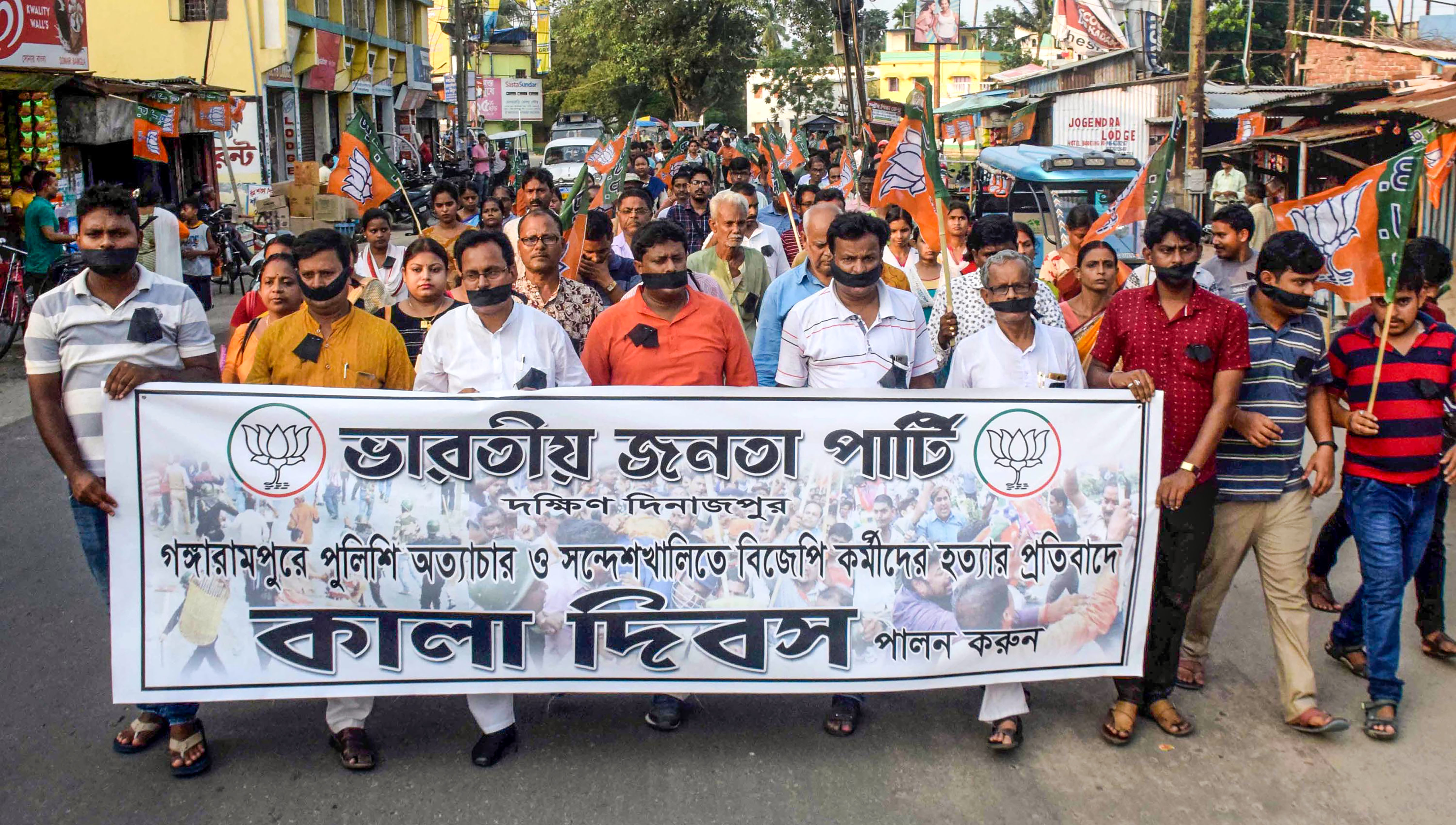
Why people are willing to die for political cause in Bengal?

‘Political power grows out of the barrel of a gun.’
When Chinese Communist leader Mao Zedong had coined the phrase, Bengal was nowhere in his mind. But it is in this state that his political philosophy has been finding resonance, with a little tweak, for decades as a powerful means to establish political supremacy.
At least 13 people — seven Bharatiya Janata Party (BJP) workers and six from the ruling Trinamool Congress (TMC) – have died in political violence since the Lok Sabha polls commenced on April 11.
The situation has come to such a pass that Governor Keshari Nath Tripathi on Monday (June 10) told a news channel that there might be a need for President’s rule in the state. The governor’s observation came after the Centre issued an advisory to the state government, taking a serious note of the latest political clash in which two BJP and one TMC supporters died in North 24 Parganas district on Saturday evening.
In the Centre’s advisory, the TMC, however, saw a political conspiracy to destabilise the state.
“The BJP party and the central home ministry are run by the same person. The party is dictating the home ministry’s policy,” TMC secretary general Partha Chatterjee told a media conference on Monday night.
The violence that started in the run up to the elections, escalated after the results were announced on May 23.
More numbers, more power
Buoyed by a nine-fold increase in its Lok Sabha tally in Bengal, where it has won 18 seats this time as against two in 2014, the BJP now realizes it has a real chance to dethrone the TMC in the 2021 assembly elections.
On the other hand, the TMC is pulling out all the stops to defend its turf from the BJP’s aggression.
“The stake is high as for political workers in Bengal, party affiliation is a matter of identity as well as a source of livelihood. From the locality’s Durga puja to business syndicates, the ruling party workers dominate almost every aspect of life, particularly in semi-urban and rural areas,” pointed out political analyst and author Subir Bhaumik.
Several political killings are, therefore, linked to business rivalry. For instance, the police, after preliminary investigation into Saturday’s clashes at Sandeshkhali in 24 Parganas district, said the fight over taking control of fish ‘bheris’ in the area was behind the killings. Bheri is a local name for inland fishery. Police have registered a case against TMC block president Sheikh Sahajahan, who is currently controlling the bheris. Sahajahan’s name was mentioned as accused in the FIR lodged by the family members of the slain BJP workers.
In a situation where the ruling party buys loyalty of local goons and a large section of youth by making them political entrepreneurs, a mere anti-incumbency factor more often proves ineffective to defeat the incumbent and hence, the need for agitations and other means of mass mobilization , Bhaumik says.
The Nandigram and the Singur agitations in the run up to the 2011 assembly elections helped the TMC to defeat the CPI (M)-led Left Front, which had ruled the state for 34 years.
BJP’s hindutva agenda a hit
Similarly, militant Tebhaga movement of 1946, food movements of 1959, in which 80 people died in police brutality in a single day in Kolkata, and of 1966 laid the foundation of a 34-year Left rule in the state.
The Naxal movement that started in late 1960s and the brutal police crackdown on the Naxalites also indirectly helped the Left parties as the handling of the armed uprising discredited the then Congress government.
The BJP’s current push for power in the state is, however, organically different than all the past agitations, which were more of class struggles and related to livelihood. The BJP’s mass mobilization is largely driven by Hindu-victimhood narrative.
The party’s spectacular rise in the state to some extent can be attributed to a series of communal riots the state witnessed in the recent past. It polarized Hindu voters in favour of the saffron party, particularly in the areas bordering Bangladesh.
The large-scale violence unleashed by the TMC in the 2018 panchayat elections also helped the BJP as it had ganged up anti-TMC voters at the grassroots.
Either way, violence is a harbinger of change in the state.


